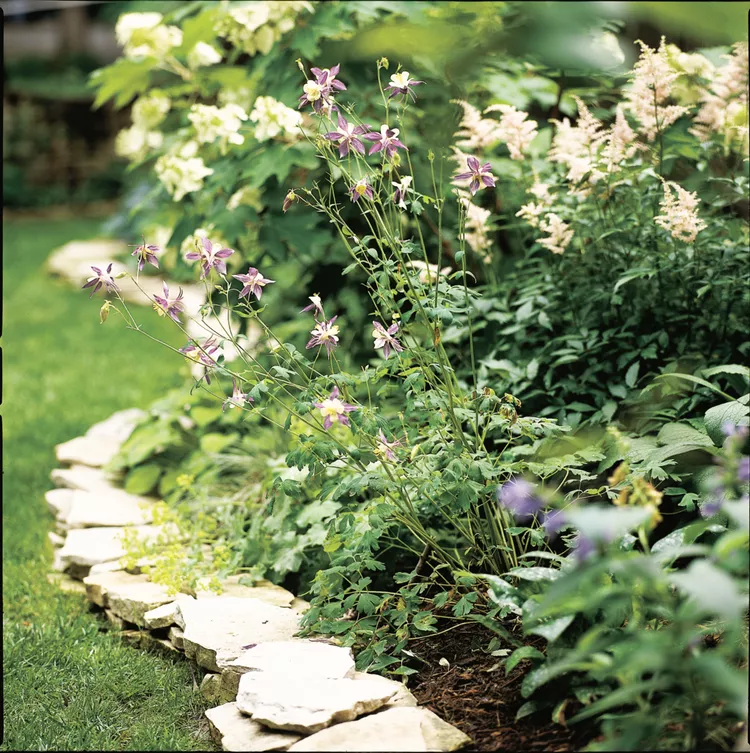Create a crisp, clean design within your landscaping using edging to outline various areas of your yard. Define designated growing areas in your flower beds and vegetable gardens. These inexpensive garden edging ideas will add character and texture to landscaping. In an afternoon, you can create a rustic brick or concrete stone outline for any area using a few simple materials.
Brick Garden Edging
Brick is a popular garden edging material because it's classic, widely available, and inexpensive. Push bricks tightly together to minimize spaces between them that turf can slip through. To prevent heaving and unevenness in your garden edging, set your bricks in a bed of sand.
If you set the brick just above the soil, you can use it as a mowing strip, running your lawn mower's wheel over the brick. This eliminates the need for trimming.
Diagonal Brick Garden Edging
Lay old, mismatched bricks on the diagonal for a 19th-century domino effect in your garden edging. Dig a trench and add several inches of sand for drainage so the bricks don't heave. Set the bricks in the trench, half exposed, leaning tightly one against the next, then fill in with soil. If you're edging several garden beds, lean all the bricks in the same direction.
Flagstone Garden Edging
Edging your landscaping garden beds with flagstone lends a classic look well-suited to country and cottage gardens. Flagstone is available in several colors and thicknesses, so you can easily use it to coordinate or contrast your plants or other stonework in the landscape and on your house. Irregular in shape, flagstones are durable and stack securely in the yard.
Rock Garden Edging
Mix and match rock shapes and colors for a natural stone garden edging idea. Large multicolor rocks complement this landscape's informal style. The round boulders are winding, allowing sweet alyssum to creep over and between the stones, creating a lacy, scalloped look in this landscaped flower bed.
Cobblestone Garden Edging
Square cobbles of granite garden edging combined with a hedge of Korean boxwood give this landscape its definition. 'Annabelle' and oak leaf hydrangeas add billowing white blooms, their large leaves contrasting with the textures and shapes of the paving, edging, and hedge.
Garden Edging Idea with Plants
Low, mounding plants can be a fantastic garden edging idea. When planted in one long mass of draping color, low-growing plantings of sweet alyssum (shown here), veronica, bouncing bet, artemisia, coralbells, or candytuft soften hard edges and add a splash of color.
Recycled-Bottle Garden Edging
Edge your landscape with colored glass bottles to infuse your yard with a whimsical, down-home look. Bury the bottles' necks side-by-side in the soil to use as garden edging. To keep turf or weeds from migrating from your lawn into your beds, sink a sheet of aluminum flashing about 8 inches into the ground alongside the bottles.
Cast Concrete Edging
Concrete garden edging eases mowing, and its serpentine shape creates a winding path through the landscape shown here. Varying heights add interest and allow for smooth slope or uneven landscape transition.
Keep-It-Simple Garden Design Ideas
Make your garden easy to care for so you can enjoy your free time relaxing instead of constantly weeding, mowing, and trimming. Start with perennials and shrubs that will return year after year for foliage and color you can depend on, rather than annuals that need replacing. You can opt out of much lawn care by planting a wildflower lawn instead, eliminating the need for mowing. Pick native plants that thrive in your environment rather than choosing varieties that need constant attention and special care. To keep weeds at bay, use mulch as a groundcover. Pick a mulch that complements your garden's colors.




















